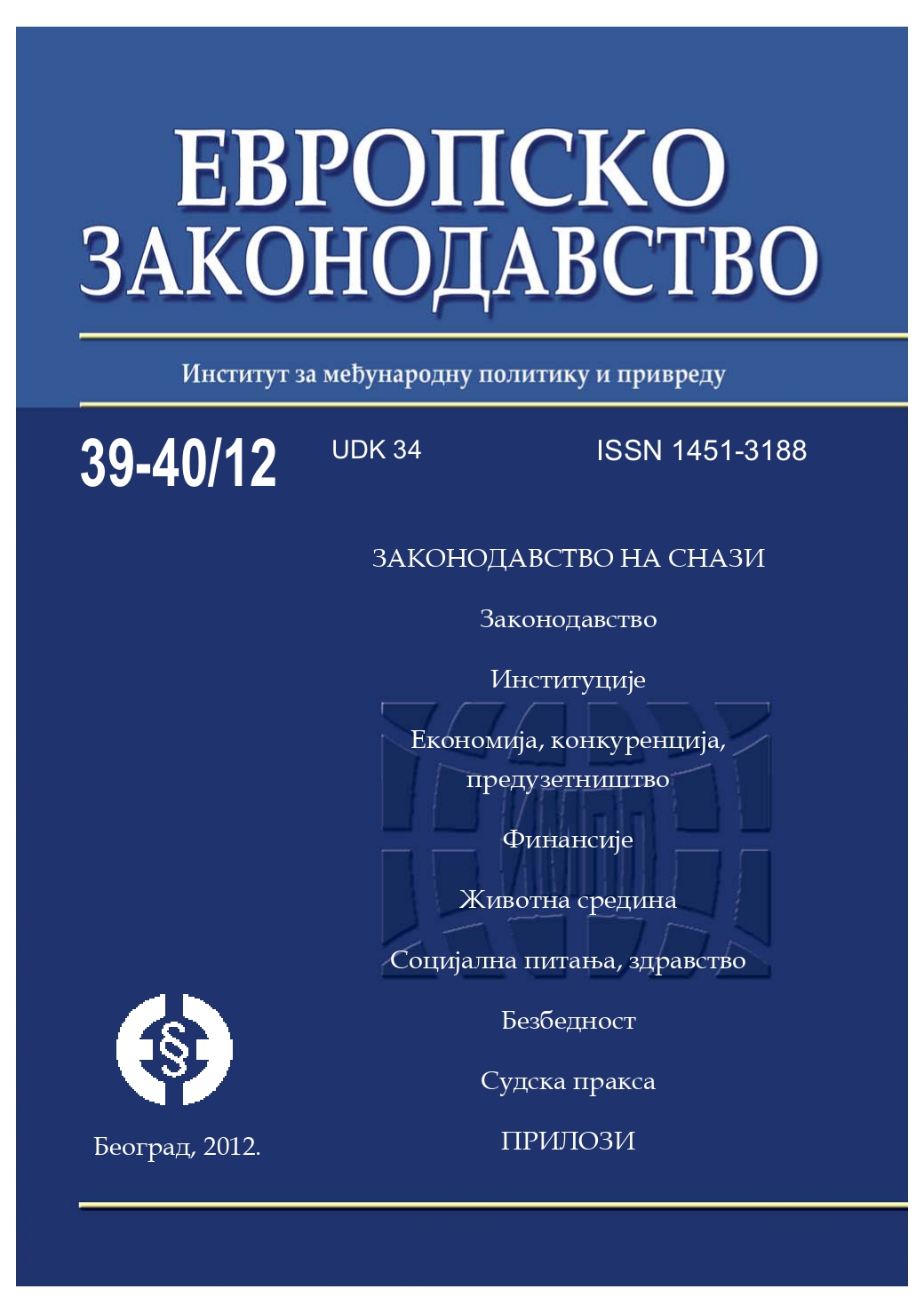Хемијски удеси у прописима Европске уније
Chemical accidents in European Union regulations
Author(s): Dragoljub Todić, Ana GrbićSubject(s): EU-Legislation
Published by: Институт за међународну политику и привреду
Keywords: Chemical accident;Seveso II;dangerous substances;establishment;operator;Major-Accident Prevention Policy;Safety Report;Emergency Plan
Summary/Abstract: This paper analyses the EU regulations directly relevant to safety of chemicals and industrial plants. Special attention is paid to provisions of Council Directive 96/82/EC of 9 December 1996 on the control of major-accident hazards involving dangerous substances. The Directive is aimed at the prevention of major accidents which involve dangerous substances and the limitation of their consequences for man and the environment, with a view to ensuring high levels of protection throughout the Community in a consistent and effective manner (Article 1). The Directive prescribes general and special obligations of operators and competent authorities. Operators are obliged, inter alia, to prepare, adopt, update and carry out the Major-Accident Prevention Policy (Article 7), Safety Reports (Article 9) and Emergency Plans (Article 11). The Directive prescribes operator’s obligation to carry out consultations with the employees regarding the Internal Emergency plan as well as the public authority’s obligation to announce the External Emergency plans to the public. Likewise, Seveso Directive also includes the obligations of regular practical testing of both plans. Prior to introducing the risk management system, an emphasis must be given to the state and development of the new management methods and organizations as well as the changes in industrial practice relating to risk management. Member States can prohibit the use or bringing into use of any establishment, installation or storage facility, or any part thereof where the measures taken by the operator for the prevention and mitigation of major accidents are seriously deficient (Article 17). In addition, the Directive regulates following issues: Land-use planning (Article 12), Information on safety measures (Article 13), Information to be supplied by the operator following a major accident (Article 14), Information to be supplied by the Member States to the Commission (Article 15), Inspections (Article 18), Information system and exchanges (Article 19), Confidentiality (Article 20). The authors also point out other relevant EU legislations which are of importance for chemicals, the safety of industrial plants operation, the prevention and control of accidents and industrial pollution as a whole. The last part of the paper emphasizes the importance of this issue for the Republic of Serbia and the state of conformity of the national legislation of Serbia with the relevant EU regulations. Transposing of the EU regulations into the national Serbian law system is provided by the following key laws: Law on Environmental Protection, Law on Chemicals, Law on Integrated Prevention and Control of Pollution and Law on Emergency Situations. An improvement regarding the ratification of relevant international treaties has been achieved (The Convention on the Transboundary Effects of Industrial Accidents, 1992; the Basel Convention on the Control of Transboundary Movements of Hazardous Wastes and their Disposal, 1998; The Rotterdam Convention on the Prior Informed Consent Procedure for Certain Hazardous Chemicals and Pesticides in International Trade, 1998; Stockholm Convention on Persistent Organic Pollutants, 2001). However, it is estimated that creating of adequate conditions is essential for the implementation of the subsequent regulations. This especially relates to further strengthening of the capacity of competent institutions.
Journal: Европско законодавство
- Issue Year: 2012
- Issue No: 39-40
- Page Range: 337-352
- Page Count: 16
- Language: Serbian

